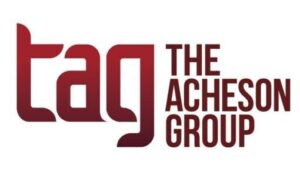FDA is off to a fast start in 2025! By the 6th of January, FDA had already published five new guidance documents and a PFAS notice, in addition to the final rule on “healthy” claims published in mid-December. In this article, we take a brief look at each of these new documents and what they mean to the industry.
- Food Allergens:
- Food Allergen Labeling Q&A (Ed. 5) (Guidance) provides an update to previous versions of the allergen labeling guidance including updates from the draft guidance published in November 2022. Along with general updates and clarifications, some of the major changes were:
- With coconut not included in the list of Tree Nuts FDA Considers as Major Food Allergens (Table 1, page 15), coconut does not need to follow food allergen labeling requirements of the FD&C Act. In fact, the guidance specifically states that “Because other tree nuts that are not listed in Table 1 do not have a robust body of evidence to support inclusion as a major food allergen, they should not be included in the ‘Contains’ statement,” but are still must be in the ingredient list.
- The term “milk” is clarified to be that from domesticated cows, goats, sheep, or other ruminants, and “eggs” as eggs from domesticated chickens, ducks, geese, quail, and other fowl.
- An ingredient derived from a major food allergen that does not contain its protein is not subject to the allergen labeling requirements.
- Public Health Importance of Non-major Food Allergens provides an overview of FDA’s approach to evaluating the public health importance of non-major food allergens. While the primary focus will continue to be on IgE-mediated food allergy, the agency is also open to considering allergens on a case-by-case basis through other mechanisms.
- Sanitation Programs for Low-Moisture RTE Foods and Corrective Actions Following an Event (Draft Guidance). This guidance, which is very much in line with the advice TAG provides related to a “seek and destroy” mindset, adds the recommendation that facilities “further characterize any pathogen isolate obtained during routine verification activities (e.g., environmental monitoring, ingredient testing, or product testing) or during corrective actions (e.g., investigative sampling).” The thinking is that it enables the determination of whether isolates obtained from different sampling sites or on different sampling occasions are the same or closely related to each other. The guidance notes that pathogen isolates can be characterized by serological methods (e.g., serotyping) and/or molecular methods (e.g., PFGE and WGS), adding that WGS provides the most definitive determination and, thus, is considered the most discriminating method. It also states, “Knowing whether a pathogen isolate is the same or closely related to those previously found on environmental surfaces or in product at your facility can better enable you to identify and implement appropriate and effective corrective actions, including steps to prevent the contamination from recurring.” With the previous mantra having been to treat all Listeria as Listeria monocytogenes, TAG sees this further recommendation as helping facilities contextualize risk and what’s happening in the facility, (e.g., whether it’s related to the environment, ingredient, etc.). This is also consistent with FDA’s 2023 open letter to the infant formula industry and can help to determine if there may be multiple root causes, ensuring that you aren’t working to fix the “wrong” problem. While FDA is not yet mandating genetic characterization of any isolates, this guidance is certainly pushing regulated firms in that direction.
- Plant-Based Alternative Food Labeling (Draft Guidance). Focused on best practices for naming and labeling of plant-based food alternatives for animal-derived foods (plant-based alternative foods), the recommendations are intended to help consumers better understand the nature or source of the food and differences among the products to enable informed purchasing decisions. The scope includes plant-based alternatives to eggs, seafood, poultry, meat, and dairy products (except milk) that fall under FDA jurisdiction, with milk alternatives “being addressed elsewhere.” Because definitions and standards of identity have not been established for plant-based alternatives, these foods must be labeled with their common or usual names, or in the absence thereof, a statement of identity that accurately describes the food. This does not necessarily preclude the use of the names of animal-derived foods, but doing so must not cause the label to be misleading. Thus, its description should inform consumers of the specific plant source(s) and, should not suggest that animal source(s) are present or have been used as ingredients. Because there may be nutritional differences between a plant-based product and an animal-derived product, conveying the plant source(s) in the product name can help consumers understand that the composition of the product is different and prompt consumers to review the Nutrition Facts label.
- Action Levels for Lead in Processed Baby Food (Guidance). Focused on processed food represented or purported to be for babies and children under two years of age, the guidance provides information on the action levels for lead, along with background and rationale for the determination. Processed food in this guidance refers to packaged food (e.g., in jars, pouches, tubs, or boxes), including ready-to-eat (e.g., purees) as well as semi-prepared foods (i.e., dry infant cereals). Reflecting levels of lead at which FDA may regard the food as adulterated, the action levels are set at:
- 10 parts per billion (ppb) for fruits, vegetables (excluding single-ingredient root vegetables), mixtures (including grain- and meat-based mixtures), yogurts, custards/puddings, and single-ingredient meats.
- 20 ppb for single-ingredient root vegetables.
- 20 ppb for dry infant cereals.
- Determination that 35 PFAS food contact notifications (FCNs) are no longer effective (Notice). Determining that manufacturers or suppliers have ceased production, supply, or use of 35 food-contact substances which were previously authorized for grease-proofing coatings to prevent leaking of oil and water, FDA announced its determination that 35 food contact notifications related to the per- and polyfluoroalkyl substances (PFAS) are no longer effective. The action was the latest in a line of actions taken to reduce, then remove the use of the PFAS substances: In July 2020, manufacturers or suppliers voluntarily agreed to phase out their sales, then in February 2024, the FDA announced that all grease-proofing substances containing PFAS are no longer being sold by manufacturers for food-contact use in the U.S. market. While the 35 substances are no longer authorized for use, FDA is allowing a compliance date of June 30, 2025, for certain food paper packaging produced, supplied, or used before January 6, 2025, recognizing that manufacturers or suppliers may require additional time to exhaust existing stock. FDA has also developed a screening method to detect grease-proofing agents containing PFAS in paper and paperboard packaging enabling the agency to monitor packaging for the substances.
- “Healthy” Nutrient Content Claim (Final Rule). Intended to update the “healthy” nutrient content claim to help consumers identify foods consistent with dietary recommendations, the rule allows manufacturers to voluntarily use the claim on a food package if the product meets the updated criteria. To bear the “healthy” claim, the product must contain a certain amount of food (food group equivalent) from at least one of the food groups or subgroups recommended by the Dietary Guidelines and adhere to specified limits for saturated fat, sodium, and added sugars. FDA is also considering a symbol to denote “healthy” on food labels.
Keep in mind that guidances are not regulations; but we recommend that all regulated entities be familiar with the guidances that pertain to the food they are selling, since FDA does “expect” industry to be meeting those standards. With so many new and updated guidances, notices, and rules pushed out within the first week of the year, it can be a challenge to read through them all and understand their application to your business. TAG makes it our business to stay on top of it all and assist our clients with compliance. Give us a call!





